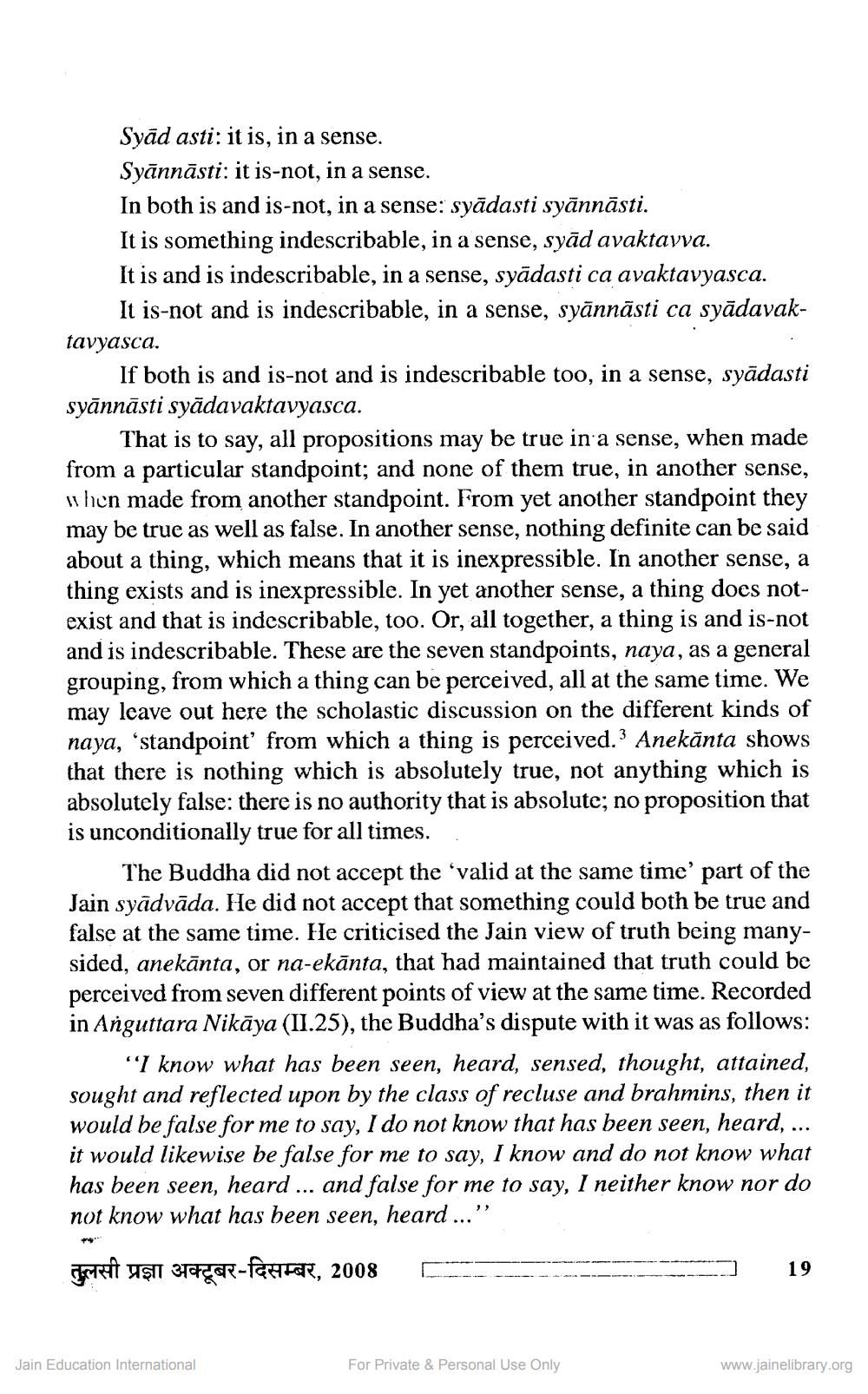________________
Syād asti: it is, in a sense. Syānnāsti: it is-not, in a sense. In both is and is not, in a sense: syādasti syānnāsti. It is something indescribable, in a sense, syād avaktavva. It is and is indescribable, in a sense, syādasti ca avaktavyasca.
It is-not and is indescribable, in a sense, syānnāsti ca syādavaktavyasca.
If both is and is not and is indescribable too, in a sense, syādasti syānnāsti syādavaktavyasca.
That is to say, all propositions may be true in a sense, when made from a particular standpoint; and none of them true, in another sense, when made from another standpoint. From yet another standpoint they may be true as well as false. In another sense, nothing definite can be said about a thing, which means that it is inexpressible. In another sense, a thing exists and is inexpressible. In yet another sense, a thing does notexist and that is indescribable, too. Or, all together, a thing is and is-not and is indescribable. These are the seven standpoints, naya, as a general grouping, from which a thing can be perceived, all at the same time. We may leave out here the scholastic discussion on the different kinds of naya, standpoint from which a thing is perceived." Anekānta shows that there is nothing which is absolutely true, not anything which is absolutely false: there is no authority that is absolute; no proposition that is unconditionally true for all times.
The Buddha did not accept the 'valid at the same time' part of the Jain syādvāda. He did not accept that something could both be true and false at the same time. He criticised the Jain view of truth being manysided, anekānta, or na-ekānta, that had maintained that truth could be perceived from seven different points of view at the same time. Recorded in Anguttara Nikāya (II.25), the Buddha's dispute with it was as follows:
"I know what has been seen, heard, sensed, thought, attained, sought and reflected upon by the class of recluse and brahmins, then it would be false for me to say, I do not know that has been seen, heard, ... it would likewise be false for me to say, I know and do not know what has been seen, heard ... and false for me to say, I neither know nor do not know what has been seen, heard ...”
---------
uşil 3776er-fanEER, 2008
C
---
19
Jain Education International
For Private & Personal Use Only
www.jainelibrary.org




